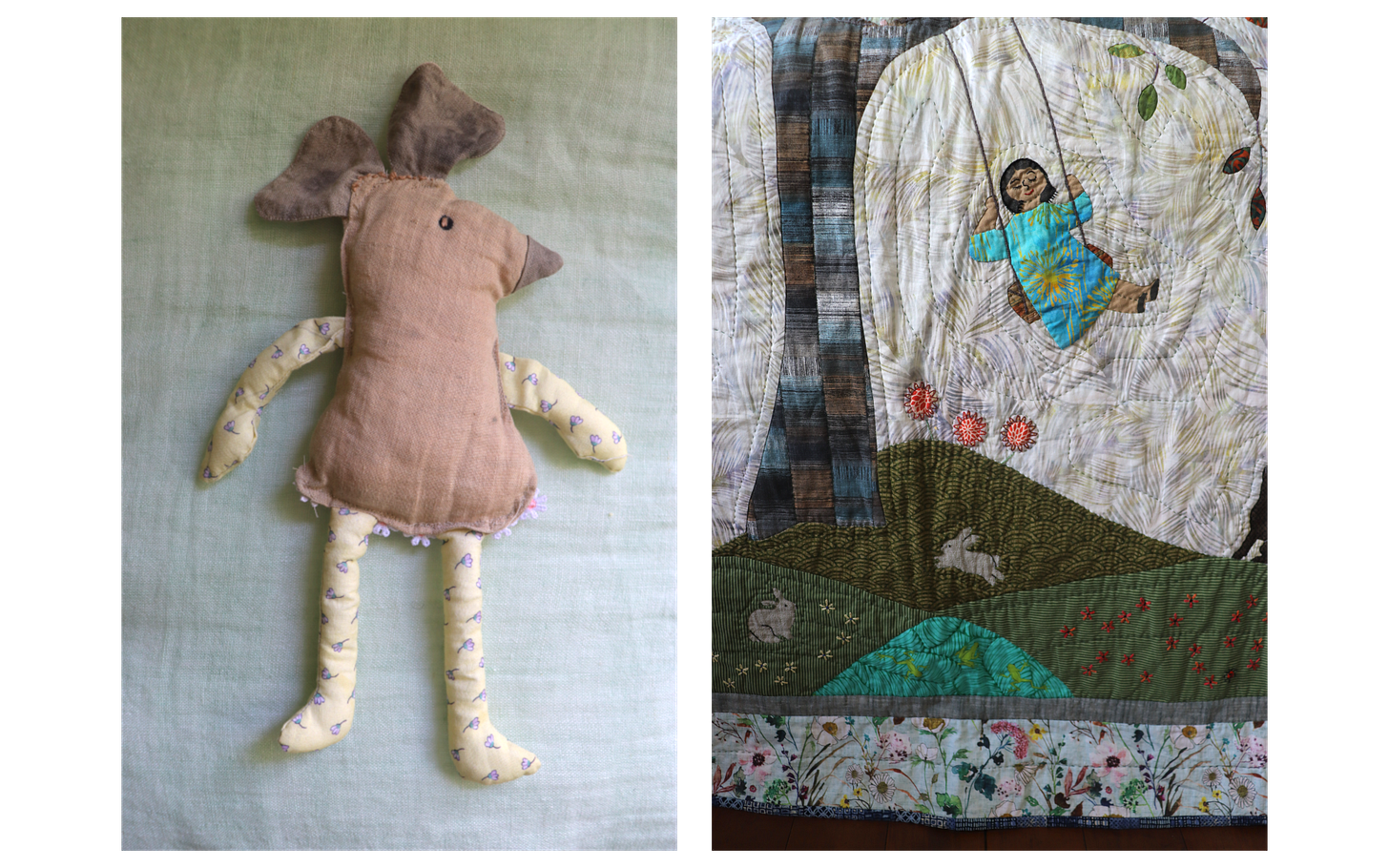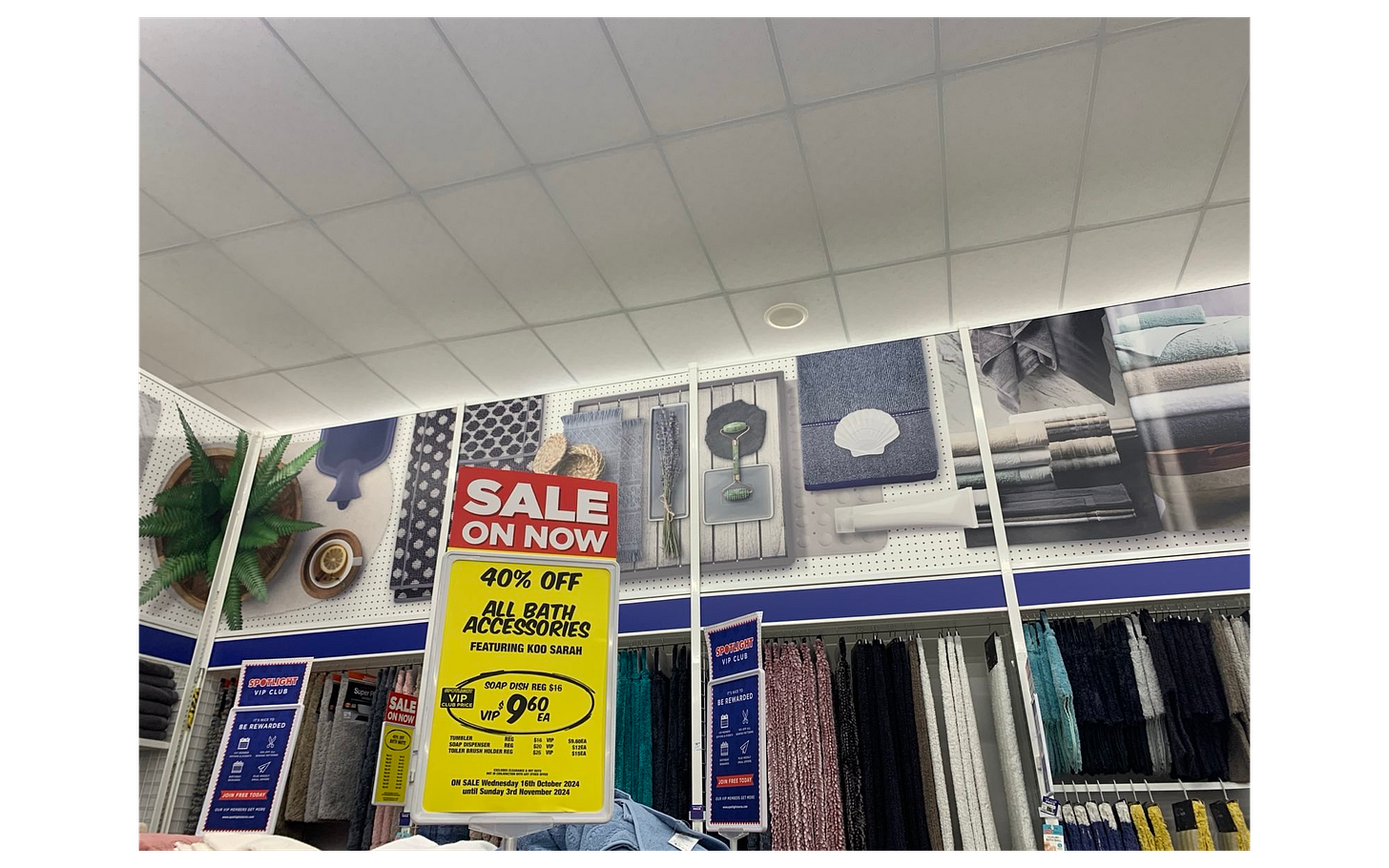This piece is the third in a series of reflections on what maximises beauty and life in the home space. Read the series introduction here and read the second piece, on Light, here.
Most of us understand the value of the handmade — a cotton quilt hand-stitched by grandma, a wooden chair lovingly carved and assembled, a loaf of freshly-baked bread diffusing its aromatic heat throughout the kitchen. It would be impossible to discuss what brings a home to life without mention of handmade artefacts. This piece is devoted to the human touch, an essential aspect of beautiful homes.
But how, exactly, does the handmade bring life and beauty to the home space?
I thought it would be illustrative to start with what has the opposite effect.
The dimmed glass doors part before you. As you enter you are whacked in the face by light, colour, shape. A rabble of parts and pieces greets you — assaults you — as you advance. You forget for a moment what you are doing here; your mind contracts into fog. Knitting needles — that’s right, you only needed knitting needles. It stinks of plastic and dessicant pads. A two-dimensional life-size cut-out of Manu1 bears his teeth at you, promoting his ‘exclusive’ cookware line. All kinds of gimcrack glint in the heavy white brightness pressing down on you from overhead spotlights. Spotlight — that’s where you are, Australia’s leading craft and fabric megastore. You can’t square the wholesomeness of knitting with the reams of synthetic junk shouting at you, shelf upon shelf, row after row, in this ‘craft’ store. You wish you’d gone to an opshop and fished through boxes of bric-a-brac for a pair of needles a couple sizes too small — that would have been preferable.
Your eyelids are so heavy with blue light that you can barely make out the area names, but somehow, with a desperate glance, you catch the signpost for ‘craft’. You must pass through the ‘homewares’ section to get there — bed ‘linen’ without a speck of flax, bath towels shedding with apathy, rugs that have never been touched by human hands; and a section called the ‘green house’ full of fake plants green as garbage-bins. The banner for the bathroom section is splayed with hyper-real images of towels, bath-mats and slippers that look no less convincing than the products lining the shelves below them.
The worst of all, a section called ‘home decorating’ advising you, on painted pine plaques: “Love Makes a House a Home”. The deep ironic dissonance of the sign would astound you, except that you’re already so numb with the absurdity of the place that you can barely muster a response.
You take a moment of pause and extend your sight to take in the whole, deranging mess. It reminds you of an iPhone camera roll — so many images you don’t know which to look at, which to keep; endless moments of capture; pixels that will likely be lost when the phone is upgraded, or otherwise relegated to a blue folder on your laptop, never to be reopened. So many images, that not a single one has any value.
But in amongst this deranging mess, one thing is clear. This place is not for the living. It’s not even for the dead. It’s for things that cannot live, and cannot die. Things beyond the scale of the human. Transhuman things.
You realise that the sign — “Love Makes a House a Home” — epitomises the entire sham. Close to nothing in here could make a home, least of all the sign telling you what does. Why? Probably because nothing in here has grown out of life (living materials), or been moulded by life (human hands). Nothing here bears the mark of nature, nor of humanity. Everything reeks of the machine. Each instance of each product is exactly the same, produced by lifeless mechanisms set to rigid blueprints in some anonymous warehouse; produced with complete ignorance of context and with a total lack of sensitivity to what, truly, makes a house a home. The irony of the sign is that Love, in this fake-scape of plastic, is nowhere to be found. All that exists here are images, shells, skeletons of reality. So many things, that there is almost nothing at all. Which explains why everything is set to ‘clearance’ — so worthless, that even the store itself cannot bear to be full of them; it wants them cleared out.
As you step out of Spotlight, with a sigh of relief, the only thing that redeems your foray into it is the knowledge that, with these knitting needles, you will create something beautiful.
The problem with things that are made without humanity is that they also usually cannot confer humanity — to space or to its inhabitants. Filling your home with these things would reduce it to a two-dimensional mass of parts. But more gravely, I argue that these things have the potential to reduce your experience of life and your character, too. They aim towards flatness: surface without substance. Like a cardboard cut-out. Like Manu in Spotlight.
Poorly-made things prompt apathy, neglect, replacement. Their negative effects spiral downwards. If we are not inspired to mend and maintain a product, we also lose the incentive to learn, or practice, valuable skill-sets of repair. Poor-quality things also compromise our health in a real sense — made, as they usually are, of cheap, toxic materials that shed their own obsolescence. Not to mention that these things, in the long run, hurt our wallets, because not only do they require regular replacement, but again, they negate our incentive towards resourcefulness and self-sufficiency which makes us outsource the purchase of many things we could have otherwise made or retrofitted ourselves — surrendering opportunities for personal growth.

Is it just me, or is it almost always obvious when something is handmade? At the very least, it is obvious when something is made well, which necessitates a fair degree of human involvement even if not complete. There is a feeling, beyond technicalities, that a handmade item engenders. It makes us feel more like ourselves, which is to say, more human, more alive. It touches us, inspires our awe and admiration. It brings warmth to our space; it creates meaning.
It also inspires more goodness. This is something essential about good quality things — they are positively generative. They have a positive charge, a positive effect which spirals upwards. A pair of hand-knitted, pure wool socks, for example, inspires care, maintenance and mending. Their value brings out our value (and virtue) — teaches us to nurture, be resourceful, thoughtful, patient; teaches us to minimise the cycle of waste-and-replace and, instead, to maximise self-generative behaviours. Even after decades of darning, when the socks give way to wear, we would be more disposed to unravel and repurpose the yarn, because we are aware of its quality.
Let’s take this one step further. Imagine the wool for these socks was hand-shorn, from the knitter’s own sheep, then washed, dyed with natural pigments from her local landscape, brushed and hand-spun before being caste onto her needles. Could you bear to dispose of those socks, even if they unraveled themselves before your eyes? If darning were no longer possible, would you not find some new use for the yarn? Perhaps you’d use it to stuff a children’s toy you were making. At the very least, you’d add it to your yarn scraps box.
Good quality things make us care. And in that way, they make us more human, and more humane.


When I look around my home, it’s the handmade items that give the space its depth and wholesomeness. I don’t know, personally, the maker behind each and every one of these pieces — but their work glows with their touch; with the hours of attentive, careful effort; with the thoughtfully-selected materials; with the reality that it has no exact duplicate because, while there may be similar pieces out there, the human hands that brought them into existence can never fashion the same thing twice. Only machines can do this, and when they do, it is painfully obvious.
Don’t get me wrong — it’s not always possible to buy the handmade, the naturally-fibred, the local. There are, of course, limits to accessibility, and affordability. Not all of us have handy or crafty relatives, either. While many quality goods can be found these days in second-hand stores and opshops, at affordable pricepoints — sometimes you just need that mass-produced, poor-quality plastic storage box from BigW, or that cheap picture-frame from Spotlight.
My home is not without these concessions. But if you fill your home with enough quality, it will outweigh, perhaps even redeem, those moments of compromise. Equally, sometimes a poorly-made item can be redeemed by human stories and associations; by the when and how of usage; by it’s particular placement in the home; by a child who has repurposed it as a toy or game. The value and meaning of an item — and its capacity to enliven and beautify the home space — is, admittedly, not always dependent on the mode and material of its construction.
Nevertheless, well-made, human-made goods lend themselves far more easily to life and beauty because, as discussed earlier, they are energetically disposed to do so — because they are born out of life and beauty.

Every handmade item is a message of care: someone actually cared about the product, about its connection to its environment, its impact on its environment and on the people and homes it will enter; its durability, its practicality but also its beauty beyond its base function. Someone cared about the story this product will tell. As a result, handmade items make us care, and a home full of care is a home full of life and beauty.
A French-Australian chef who has sold his soul to a profit-hungry Spotlight partnership.













I've been thinking about people and the things they craft by hand a lot lately. Just today, for instance, my son's girlfriend brought over a loaf of sourdough bread - shaped like a pumpkin - that she baked herself. One of our daughters brought a mocha cheesecake she made. Another son baked our pumpkin pie. The floor in our family room was designed, installed and finished by my husband, who does hardwood floors for a living. I plan to hand stitch some felt ornaments as Christmas gifts this year (I did it last year also). Just some examples. I think it's a beautiful thing when someone puts so much of themselves into something, that they took the time and effort to create something, whether by necessity or simple a desire to make something beautiful.
Thank you for sharing this. As always, you craft such beautiful words, which themselves carry the same significance of the items you list in this piece. Not at all cheap, but a treasure, very human, and enriching.